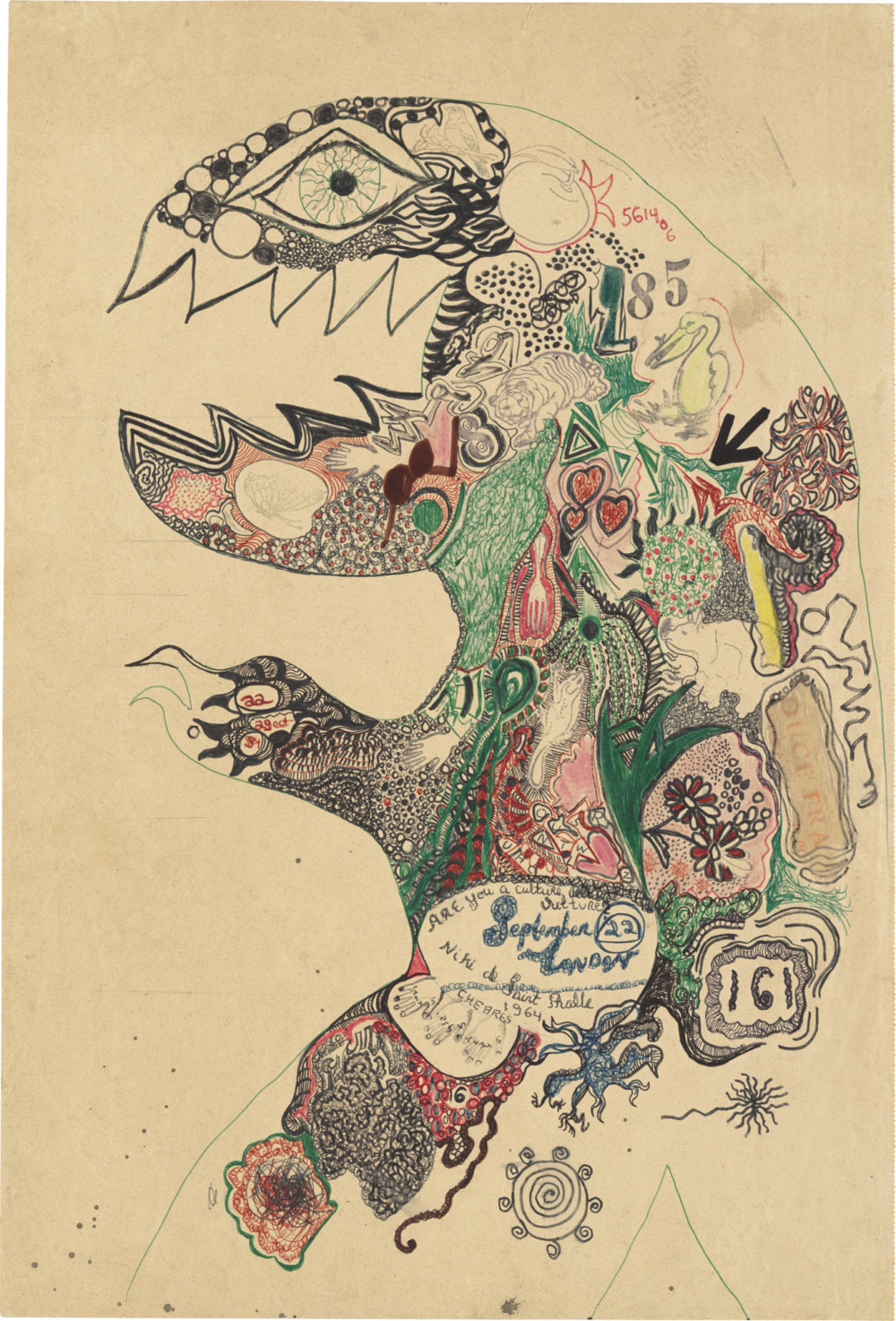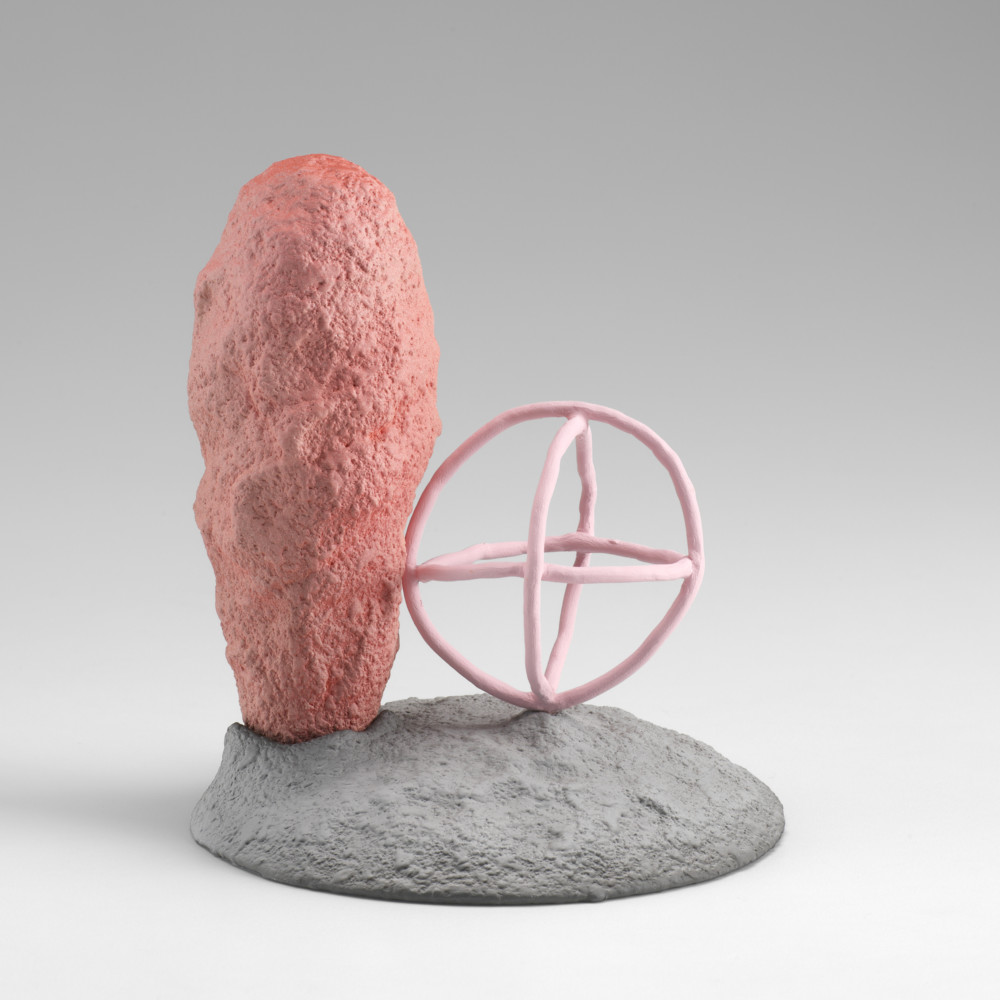Ron Nagle

Handsome Drifter 2015 Ceramic, glaze, catalyzed polyurethane, epoxy resin 3¾ × 4 × 3 inches; 10 × 10 × 8 cm
Ron Nagle is known for his intimately scaled sculptures made of ceramic elements that are slip-cast, fired, and embellished with epoxy and other synthetic materials that allow him to expand his forms beyond the limits of clay. Some are glazed to a hot-rod finish, others textured like stucco and then airbrushed. Despite the work’s three-dimensionality, Nagle explains, “everything is done, even subconsciously, from a flat point of view.”
Nagle began working with ceramics during the 1950s as a high school student. In 1961 he apprenticed to the pioneering ceramic artist Peter Voulkos at the University of California, Berkeley, and later exhibited his work alongside Voulkos, Ken Price, and other innovative West Coast artists working in clay. His work is inspired by such artists as Giorgio Morandi, Phillip Guston, and George Herriman, and by such varied forms as Japanese Momoyama ceramics and Hawaiian funerary monuments. This merging of incongruous elements also extends to his titles, which are loaded with puns and wordplay: Centaur of Attention (2014), for example, or Beirut Canal (2009). “I’m trying to create a hybrid,” he explains. “You can’t quite put your finger on it.”
Ron Nagle (b. 1939) was born in San Francisco, where he currently lives and works. His first one-person exhibition took place in 1968, and since then he has had exhibitions at numerous museums, including the Saint Louis Art Museum, the Carnegie Museum of Art in Pittsburgh, the San Diego Museum of Art, the Museum Boijmans Van Beuningen in Rotterdam, the Secession in Vienna, the Fridericianum in Kassel, and the Berkeley Art Museum. In 2013 his work was included in the exhibition “The Encyclopedic Palace” at the 55th Venice Biennale. Nagle is also a musician, and a deluxe edition of his acclaimed 1970 album Bad Rice was released on Omnivore Recordings in 2015.
Selected Works

Untitled (dark green archimectric) 1981
Ceramic, glaze, paint
Divinity 1998
Ceramic, glaze, matte china paint, gold lustre
Lobster Boy 1999
Ceramic, glaze, china paint, epoxy resin
The Bad Clown 2003
Porcelain, glaze, china paint, epoxy resin
General Malaise 2012
Ceramic, glaze, catalyzed polyurethane, epoxy resin, styrene
Kingsford Special 2013
Ceramic, glaze, polyester resin, catalyzed polyurethane, epoxy resin, aluminum
Urinetrouble 2015
Ceramic, glaze, catalyzed polyurethane, epoxy resin
Glorious Assemblage 2016
Ceramic, glaze, catalyzed polyurethane, ink, epoxy resin
Early Bird Special 2018
Ceramic, catalyzed polyurethane, epoxy resin
Exhibitions

RON NAGLE
Fast of Words
April 21–June 10, 2023
1062 North Orange Grove
Los Angeles

RON NAGLE
Necessary Obstacles
September 10–October 23, 2021
523 West 24th Street & Online
New York & Online

RON NAGLE
Getting to No
May 2–June 15, 2019
522 West 22nd Street
New York

RON NAGLE
Ice Breaker
January 21–April 8, 2017
1062 North Orange Grove
Los Angeles

RON NAGLE
Five O’Clock Shadow
September 11–October 24, 2015
522 West 22nd Street
New York
Group Exhibitions

ONE HUNDRED DRAWINGS
November 8, 2019–January 18, 2020
523 West 24th Street
New York

PAVLOVA’S DAWG
and Other Works by Gallery Artists



